The empty space is the place outside the Earth's atmosphere and between celestial bodies, stars, and planets. There is neither air nor water nor gravitational force in space. There is no medium in space, so the sound cannot be heard in space.
It would be wrong to say that the space is completely empty because the empty space here is full of hydrogen and helium gas and dust particles. Along with this, there are dangerous radiations like Magnetic fields, Electromagnetic Radiation, Infrared, Ultra Violet Radiation, Gamma Ray and X-Ray. There is no oxygen in space, so we have to carry oxygen cylinders with us to survive in space.
This question definitely comes to everyone's mind, why does space appear black, when there are many bright bodies like the Sun and its light, but there is zero quantity of oxygen molecules in space and there is no atmosphere Is found, so there is no scattering of any kind, so we see space as black.
We and you can not imagine how big space can be, it is beyond the imagination of all of us. Space is a mystery in itself and many countries send their satellites in space-time to time know it. There are many countries like America, China, Russia, Germany which keep launching their satellites in space. The first satellite launched by any country in space was Sputnik-l which was launched into space by the former Soviet Union. Similarly, India has also caught fire in the field of space and India has also established many satellites in space.
Space programs in India were started by Dr. Vikram Sarabhai. He is called the father of space programs in India. Space programs in India started in 1962 with the formation of the Indian National Space Research Committee headed by Dr. Vikram Sarabhai. The committee started functioning under the Department of Atomic Energy.
After this, the Indian Space Research Organization (ISRO) was reorganized on 15 August 1969. The headquarters of ISRO is in Bangalore. In 1972 The Department of Space and Space Commission was formed by the Central Government to make space research a strong financial base and programs run smoothly and ISRO was placed under the Department of Space.
The Indian space program commenced in 1963 from Thumba Equatorial Rocket Launch Center (TERLS) near Thiruvananthapuram as Thumba is its launch center as the Earth's geomagnetic equator passes through here. The first sleeping rocket "Naik Apash" which was manufactured by America was launched.
India's first satellite was Aryabhata, named after the famous astronomer and mathematician Aryabhata by Indian Prime Minister Indira Gandhi. It weighed 360 kg, but at this time India did not have its own launch, so Aryabhata was was launched on 19 April 1975 by a launch vehicle "Cosmos-3M" from Russian's Kasputin Yar (Bekanur).
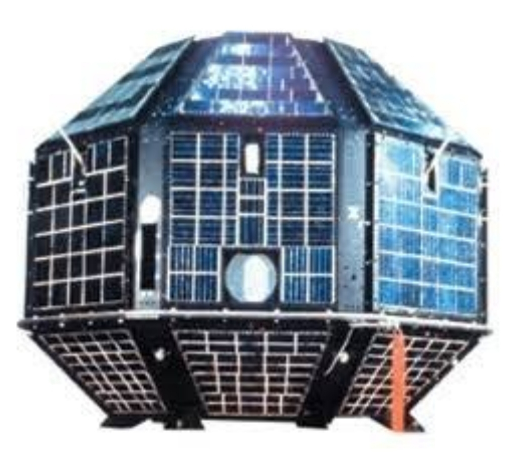
Aryabhata was created by the Indian Space Research Organization.
On 23 April 1975, due to technical fault, the contact of the scientists was lost and this mission ended, but this vehicle continued to revolve around the Earth. By 1992, this mission was destroyed, this mission ended it opened the way for India in space. Aryabhata was a huge achievement for India in the field of space.
After Aryabhata, India launched its second satellite "Bhaskar-l" into the Earth's orbit on 7 June 1979 by the Inter Cosmos launch vehicle from the former Soviet's Baikonur Launch Center. The satellite weighs 445 kg. It stopped working in August 1981. After Bhaskar-l, Bhaskar -ll launch was also done on 20 November 1981 from the Baikonur launch center.
First satellite built and launched by India -
Rohani RS-l was successfully launched by Indian launch vehicle SL-V-3 from Sriharikota on 18 July 1980. Thus Rohani RS-l became the first satellite built by India and launched by India. With its launch, India tested India's first launch vehicle SL-V-3.
India's first experimental communication satellite Apple -
India's first experimental communication satellite, Apple, was launched on 19 June 1981 by the European Space Agency's Ariane-4 launch vehicle from the Coru Space Launch Center in French Guiana. Apple has been used in many communication tests, including broadcasting and radio networking of TV programs. The experience gained from Apple played an important role in the creation of the inset series.
India's first weather-related satellite -
Metset is India's first meteorological observation satellite. It was successfully installed on 12 September 2002 from the Satish Dhawan Space Center in Sriharikota with the help of the polar launch vehicle PSLV C-4 orbiting the geostationary transfer. This was the first time when the Indian launch The vehicle placed a satellite weighing more than 1000 kg in geostationary orbit because all earlier planets were placed in the Earth's polar orbit.
India's first education-related satellite -
Educate was the first satellite in the world dedicated to indigenously created teaching work, successfully placed in geostationary orbit with the help of geostationary satellite launch vehicle GSLV F-01 from Satish Dhawan Space Center, Sriharikota. This satellite was built for education. To bring a new revolution and new direction in the region.
First satellite built for mapping work in India -
Cartoset was the first satellite built by India for resource management and monitoring of the Earth which was launched by PSLV C-6 Launch Vehicle from Sriharikota on 5 May 2005.
SLV-3- With the construction of SLV-3, India made its foray into the field of launch vehicle technology, and with this India proved its worth. SLV-3 was a 4-stage launch vehicle that could place a satellite weighing 40 kg in a lower earth orbit. It used solid propellant as fuel.
ASLV - This was an augmented form of SLV-3 which was used to place heavier satellites weighing 100-150 kg in the internal orbit of the earth. The 5 stages satellite launch vehicle using hydroxyl-terminated polybutadiene propellant in the first and second phases and HEF-20 (HEF) propellant in the third and fourth stages.
PSLV - PSLV was built to place satellites weighing more than 1200 kg in polar sun-synchronous orbit up to 900 km altitude. It is a four-stage satellite launch vehicle in which the first and third stages use hydroxyl-terminated polybutadiene as solid propellant and ammonium perchlorate as an oxidant and second and fourth phase Ansimetrikl di methyl Haidrajain and N2O4 as liquid propellant is used.
GSLV - A new chapter in the field of space research in India was added on 18 April 2001 when GSLC D-1 was launched from Sriharikota. It is also called Geosynchronous Satellite Launch Vehicle. It can be placed 2-4 tons weighing satellites in a geosynchronous orbit. It is the most powerful rocket in India, which works in three phases. In its first phase, solid is used in the second phase liquid, and in the third stage cryogenic engine is used. Hydroxyl-terminated polybutadiene as solid propellant and ammonium perchlorate as oxidant are used and in the second and fourth stages, asymptomatic die methyl hydroxide and N2O4 is used as liquid propellants and in the third phase, liquid hydrogen (-250 C) and fluid oxygen (-183 C) are used at very low temperatures. [The temperature below 0 C-150 C is called cryogenic heat].
It is India's most powerful launch vehicle. India conducted the first successful test of cryogenic technology on 28 October 2006 at Mahendragiri, Tamil Nadu. India is the 6th country to successfully test cryogenic technology. Earlier this capability was only in the US, China, Russia, France, was near Japan. The cryogenic engine was first used by the US in a rocket called Atlan's Suture.
We have learned about India's satellites and launch vehicles. Now we know who takes these satellites into space. The task of carrying a launch vehicle and satellites in space is the rocket. Rocket is the device that carries the satellite or spacecraft into space.
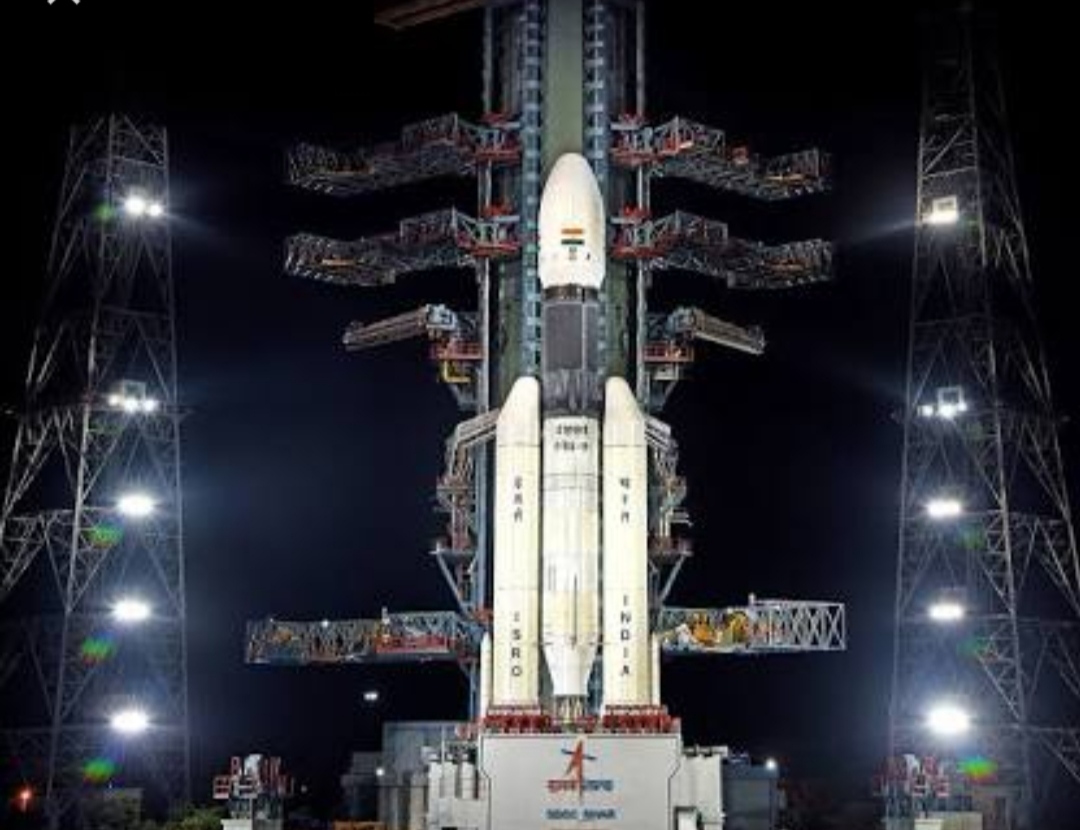
Rocket's procedure is based on Newton's third law of motion. According to this rule, every action reacts in the same and opposite direction. So when the rocket engine pushes the gas towards the outside, the reaction of this action gas also pushes the rocket forward with equal force, which gives the rocket further velocity and increases further.
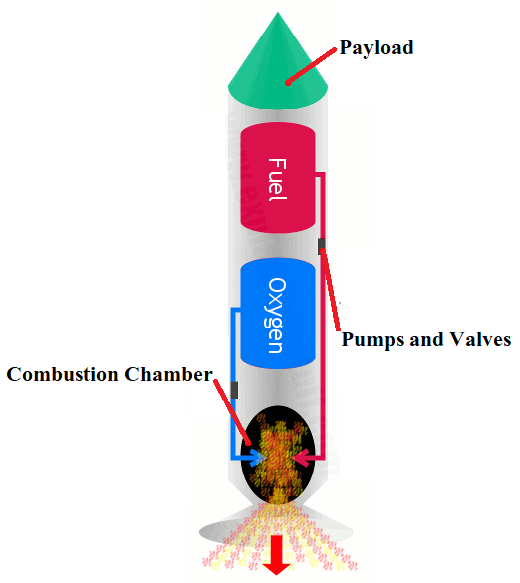
Both solid and liquid fuels are used as fuel in the rocket. Fluid or solid fuel is injected in the presence of oxygen in a chamber within the rocket, which results in the gas being produced at high pressure behind the rocket. A narrow face comes out and as a reaction, it pushes the rocket forward and the rocket receives extremely high velocity.
The basic difference between a rocket engine and a jet engine is that the jet engine gets oxygen to the oxygen present in the air but there is no oxygen in the space, so the rocket engine carries the oxygen with it.
To send any object out of the Earth's atmosphere, a special velocity is required, which is called the escape velocity. If any object is pushed towards space with a velocity of 11.2 km / s, it can leave the Earth's atmosphere and enters space, and do not return to the earth. Therefore, to send a rocket into space, it has to give a velocity of 11.2 km/s so that it can go out of the Earth's atmosphere into space.
Rocket does the work of transporting a satellite or spacecraft in space, the rocket does not return from space, but the spacecraft returns.
Rocket - Rocket is a device that takes a spacecraft or satellite into space.
Spacecraft - Astronauts go into space only by sitting in a spacecraft. The spacecraft is like a plane that has everything the astronaut needs. After reaching space with the help of rockets, the astronaut can control the vehicle itself.
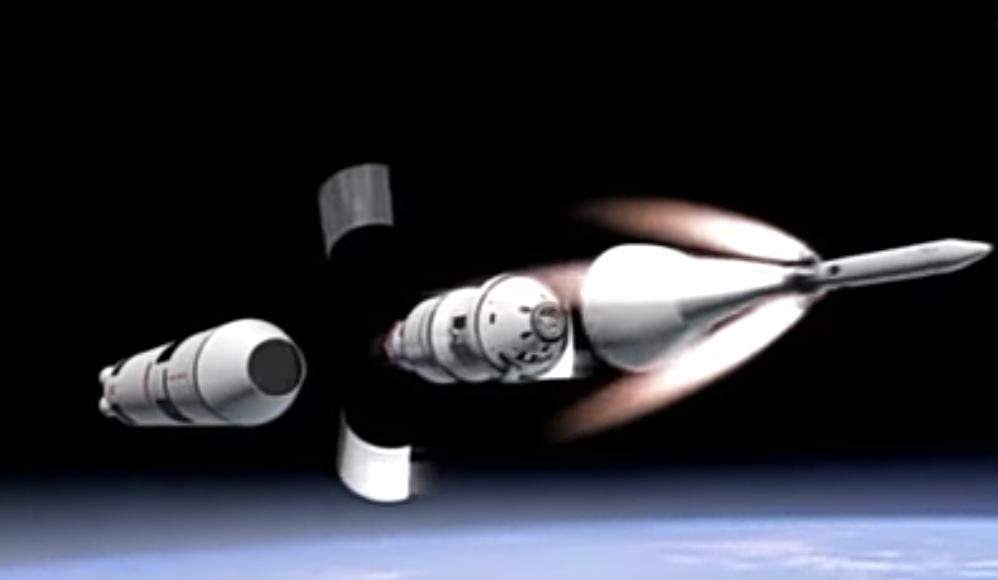
Two booster rockets and one main engine rocket are attached to the spacecraft. The function of a booster rocket is to give the rocket a high speed forward and after the fuel runs out it detaches from the rocket. After that, the work of the main engine rocket starts. It is its responsibility to take the spacecraft to space. After transporting the spacecraft to space, the main engine rocket also detaches from the spacecraft, after which the control of the spacecraft comes into the hands of the astronaut.
Now we know about going into space. We have now learned how to come back from space. When the work of the spacecraft is finished and it has to come back, it starts revolving around the earth and slowly starts entering the Earth's atmosphere. When it enters the Earth's atmosphere, it rises a bit, not parallel to the Earth because when the spacecraft enters the Earth's atmosphere it rises a bit instead of parallel to the Earth because the spacecraft enters the Earth's atmosphere so it has to face strong winds and air pressure and friction can also cause a fire in it. Therefore, to counteract this, an insulating plate is placed under the spacecraft so that it can withstand the friction of air.
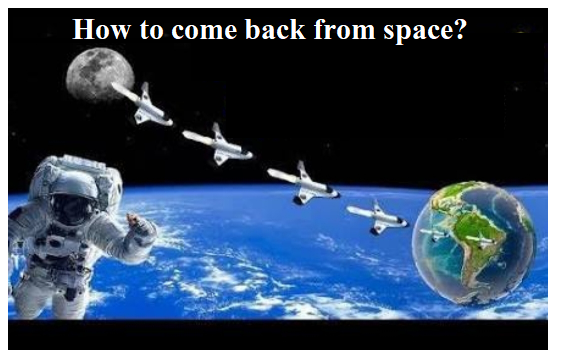
When the vehicle enters the Earth's atmosphere, it becomes parallel to the Earth and makes a landing similar to the common planes, because the vehicle's speed is higher than the other planes at the time of landing, so it has a parachute backward Opens which shakes its speed and the landing is secured.
In this way, the spacecraft returns from space to Earth.
A reusable rocket means bringing the rocket back to earth for reuse. The Booster rocket and main engine rocket are fitted with sensors to bring the rocket back to earth. The sensor faces the rocket towards the earth and when the rocket enters the Earth's atmosphere, it again turns its face towards space. After this, due to the gravity of the Earth, it starts coming down. Launching pads are made for these rockets on the earth and on coming down, this rocket fits into the launching pads and thus these rockets can be reused.
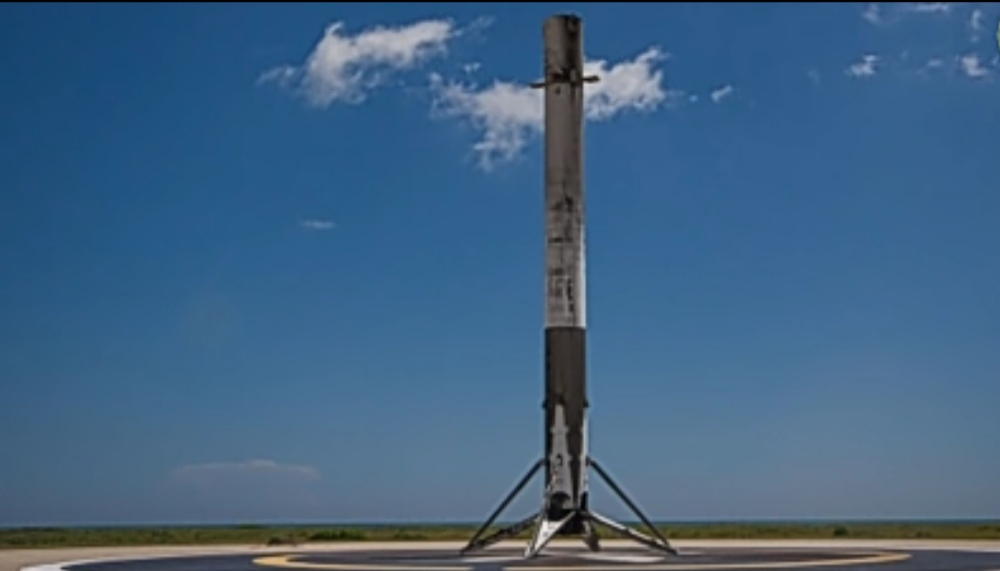
The cost of transporting a spacecraft into space is about $ 8 million. Elon Musk, who owns the Exploration Technology Corporation Company (Space - x), has succeeded in building a reusable rocket in the fourth attempt after three consecutive failed attempts. He got this success in April 2016 when a rocket made by him came back to safety to the earth and thus " Folk-first" of Space-X company made history and it became the first reusable rocket.
The Space-X company offers the ability to launch rockets at a much lower cost than its competing companies.
Geostationary orbit - The geostationary orbit is located at a distance of 360000 km from the Earth. The orbit of the satellite located in this orbit is equal to the orbit of the Earth. In this orbit, the satellite appears to be stable from the Earth. The orbit lies at the equator.
Polar orbit - This orbit is located at an altitude of about 900 km from the Earth. Remote sensing satellites keep circling in this orbit.
Space Station - A space station is a man-made station in space in which any spacecraft can be landed and the spacecraft can connect to it. A space station is a place from where the Earth can be surveyed. It is placed in the lower circular orbit of the earth.
Space Laboratory - A special type of satellite that floats in the Earth's orbit in space and where space-related research is done.
Remote Sensing Satellite - A satellite that can be used to capture images of objects on the surface of the Earth. The satellite is set in any place we need to know the location and the satellite would take pictures of that place and send them to scientists. And the information of that place is known to scientists.